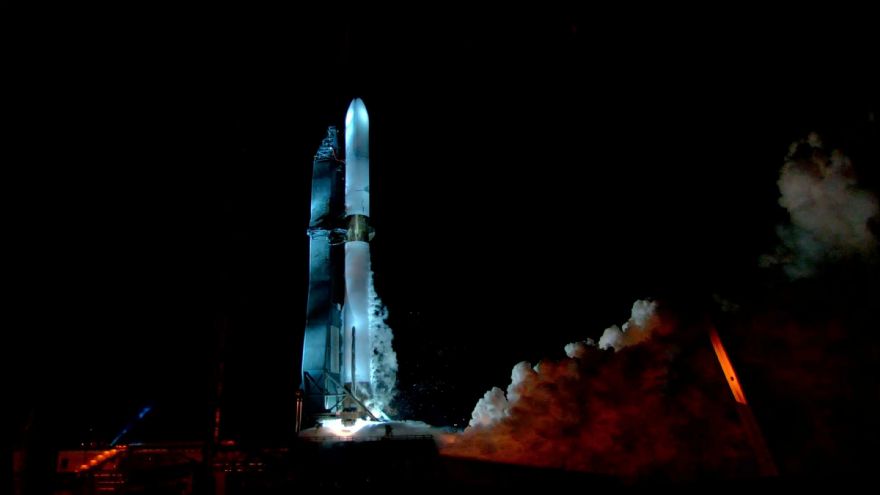
New Glenn, a heavy-lift orbital launch vehicle developed by
Blue Origin, which stands 98m high and features a 7m payload fairing, enabling twice the volume of standard 5m class commercial launch systems, successfully completed an integrated launch vehicle hotfire test on 28 December.
This represents the final major hurdle on the journey to first flight. NG-1 will carry a Blue Ring Pathfinder as its first manifested payload and will launch from Launch Complex 36 in Cape Canaveral, Florida.
The seven-engine hotfire lasted 24sec and marked the first time Blue Origin operated the entire flight vehicle as an integrated system. The multi-day test campaign leading up to the hotfire included numerous inert functional and tanking tests. The integrated launch vehicle included the first and second stages of the NG-1 flight vehicle, and a payload test article comprised of manufacturing test demonstrator fairings, a high-capacity fixed adapter flight unit, and a 45,000lb payload mass simulator.
One of the primary goals of the test campaign was to demonstrate day-of-launch operations in Blue Origin’s NG-1 test configuration. Additionally, the team conducted several tests to validate vehicle and ground systems in the fully integrated, on-pad configuration. This data will be used to finalise day-of-launch timelines, confirm expected performance, and correlate our models to real-world test data.
Jarrett Jones, New Glenn’s senior vice president, said: “This is a monumental milestone and a glimpse of what is just around the corner for New Glenn’s first launch. Today’s success proves that our rigorous approach to testing — combined with our incredible tooling and design engineering — is working as intended.”
The tanking test included a full run-through of the terminal count sequence, testing the hand-off authority to and from the flight computer, and collecting fluid validation data. The first stage (GS1) tanks were filled and pressed with liquefied natural gas (LNG) and liquid oxygen (LO
x), and the second stage (GS2) with liquid hydrogen and liquid oxygen — both to representative NG-1 set points.
The formal NG-1 Wet Dress Rehearsal demonstrated the final launch procedures leading into the hotfire engine run. All seven engines performed nominally, firing for 24sec, including at 100% thrust for 13sec. The test also demonstrated New Glenn’s autogenous pressurisation system, which self-generates gases to pressurise GS1’s propellant tanks.
This test campaign captured a number of firsts for the New Glenn launch system, including the first seven-engine operations, the first integrated GS1-GS2 tanking demonstration, the first LNG/LOX fill for GS1, as well as first chilled helium operations for GS2. The campaign met all objectives and marks the final major test prior to launch. Its reusable first stage aims for a minimum of 25 missions and will land on Jacklyn, a sea-based platform located several hundred miles down range. Reusability is integral to radically reducing cost-per-launch.
Blue Origin has several New Glenn vehicles in production and a full customer manifest. Customers include NASA, Amazon’s Project Kuiper, AST SpaceMobile, several telecommunications providers, and a mix of US government customers. Blue Origin is certifying New Glenn with the US Space Force for the National Security Space Launch (NSSL) programme to meet emerging national security objectives.